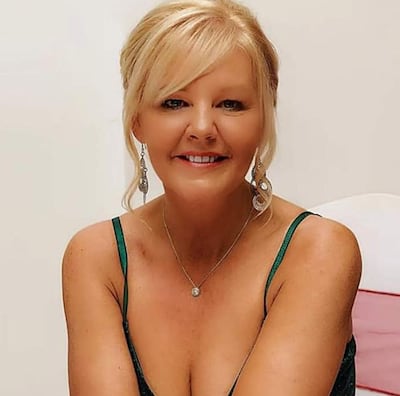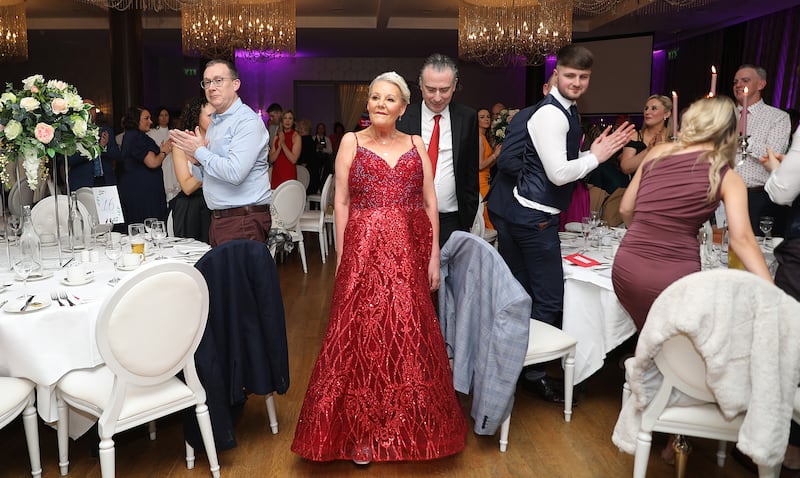Marilyn O’Connor is not afraid to die. The 56-year-old Dubliner, who lives in Co Cavan, was diagnosed with motor neurone disease (MND) in August, 2022.
Now, more than seven months later, she says she is living with the disease, not dying from it. “My brain is sharp, my emotions are the same and I’ve got my sense of humour, even if my body is debilitating,” she explains.
Her current ambition – for as long as she lives – is “to be a shining light for people who are terminally ill”. And while she is physically reliant on 24-hour care, she says that she doesn’t let her illness define her.
O’Connor’s diagnosis came completely out of the blue when – while working part-time in a local hardware store – the curtains she was lifting dropped out of her hands. “I also had a pain in my neck so my boss sent me for physiotherapy. An MRI showed a trapped nerve in the back of my neck, but the physiotherapist said the weakness in my left hand wasn’t linked to the neck pain,” she explains.
READ MORE
A neurologist diagnosed MND following a series of tests.
Straight after her diagnosis, O’Connor fell into deep despair. “On the evening of my diagnosis, I told my partner Adrian Hastings that I wanted to go to Switzerland for euthanasia. The biggest shock of all for me was that I was a very healthy and positive woman. I swam every day. I had seldom been ill. I was always a glass half-full kind of person.”

O’Connor says her diagnosis of MND has been the biggest thing she has ever faced. “It was so overwhelming, but then I handed it over to God and the universe because I couldn’t deal with it and I woke up with a calmness, serenity and acceptance the next day.
“What keeps me strong now is that calm. I am also grateful that I can put one foot in front of the other, even if I walk a bit wobbly. I can see, speak and hear. I see the beauty in nature and am grateful for small things.”
Since her diagnosis, O’Connor has lost the use of her hands and arms and struggles to keep her neck upright without a neck brace. She can walk short distances when someone supports her. “I still go out on little shopping trips and to meet friends, but I’m exhausted afterwards.”
She receives physiotherapy, occupational therapy, speech and language therapy, and counselling, and also has a key worker and the support of a nurse from the Irish Motor Neurone Disease Association. “The care I receive in my community is everything I need for a condition that there is no cure or treatment for,” she says stoically.
O’Connor wants the world to know that while MND is more common in men, women get it too.

Prof Orla Hardiman, consultant neurologist at Beaumont Hospital and Professor of Neurology at Trinity College Dublin, says the lifetime risk of getting MND is slightly higher for men. “One in 350 men and one in 400 women have a lifetime risk of getting MND and the age of onset is slightly younger in men,” she says.
With a large number of clinical trials currently in train, Prof Hardiman believes there are grounds for optimism regarding future medicines for the disease. She refers specifically to the European study, Precision ALS (amyotrophic lateral sclerosis is the most common form of MND) which Irish researchers are leading. “This study aims to identify different types and sub-types of the disease to get more effective drugs to slow down and stop the disease,” says Prof Hardiman.
While O’Connor acknowledges that former RTÉ broadcaster Charlie Bird has done tremendous work to put a spotlight on the condition, she wants to highlight how women experience the disease differently. “I think it’s because women are the main carers, so when they are diagnosed with a progressive illness, that caring role is reversed. I can’t lift my grandchildren any more. My partner has to look after me now, rather than me looking after him. All the things a woman can do are stripped away from me.”
This is not the first time O’Connor has spoken out about personal trauma. She has been an advocate for people suffering from domestic violence and child abuse. “I went through dark times myself which were extremely stressful. I decided to go public about the domestic abuse I suffered, but I have since forgiven and moved on with my life.” Her advocacy work included teaching senior gardaí how to understand the victim’s perspective in domestic abuse cases.
Four years after she had separated from (and later divorced) her first husband, O’Connor married her second husband, Vincent O’Connor, who died three weeks later. He had cancer. “Watching him slip away from me so peacefully took the fear out of dying for me,” she explains now.
That was 2014, and in the intervening years, she has written poetry and children’s fiction and helped other people to write about their experiences of ill-health. The Greystones Cancer Support book, We Turned Tears Into Laughter (2015), is a book of personal testimonies whose authors O’Connor tutored in the Greystones Right2Write Group.
[ Climb with Charlie Bird raises more than €2m for charityOpens in new window ]
Now, while she takes medication to slow down the progression of her disease, she admits she doesn’t know what lies ahead.
Like many others in her predicament, she has recorded her voice so she can continue to communicate if and when her vocal cords fail her. “It was a very surreal thing to do because I can’t even imagine not talking. But it’s part of the disease, so with the help of my speech therapist and a computer programme, I clearly and slowly read a story aloud so my voice is now saved on the computer.”












